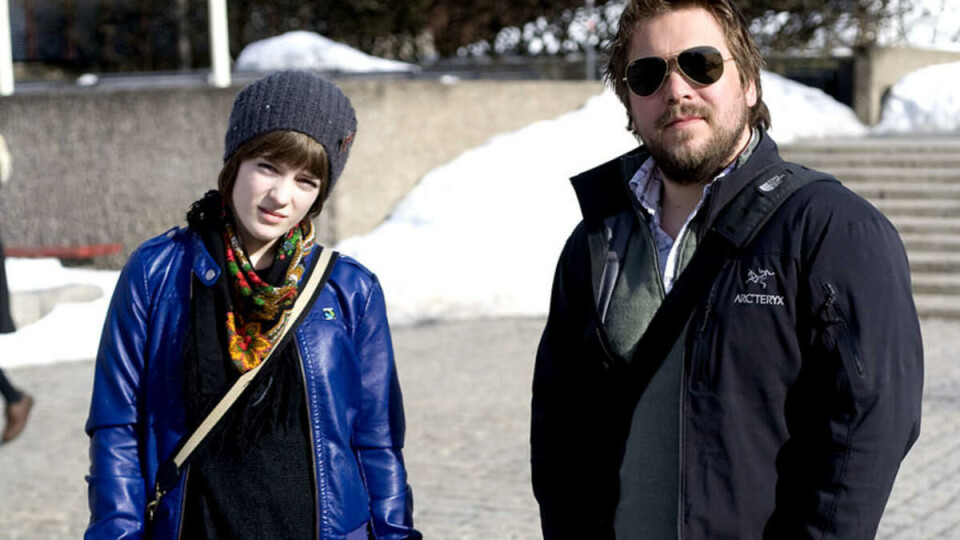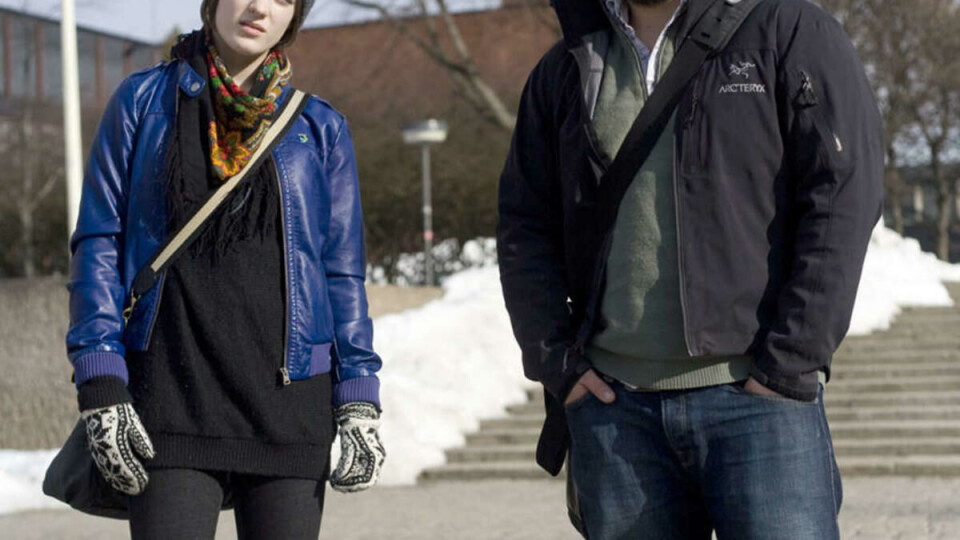
Students get poorer every year
Students in 2008 have to earn twice as much money as students in 2003 in order to cover their monthly expenses.


The student loan is standing still, while inflation is sky high. This means that students are far poorer than they were five years ago.
– The financial support given to students is too low. If politicians want full time students, the loan will have to increase, says researcher at the National Institute for Consumer Research (SIFO) Elling Borgeraas.
In collaboration with Universitas, he has set up a standard budget for a student in the academic year of 2003/4, and one for a student in 2008/09. The results show that while neither student is able to survive on their student loan alone, students today fare far worse than their predecessors. In order to break even, a student in 2008 needs 3100 kroner in addition to their loan, while in 2003, that figure was 1500 kroner.
Extreme housing costs
Even though loans from the Norwegian State Educational Loan Fund have been index regulated in accordance with inflation in society several times since 2003, the student loan has not kept up with the rise in prices. According to Norges Bank (Norway’s central bank), prices have generally risen by 12 percent, while the student loan has only risen by 6 percent in the same period.
– It is almost impossible to survive as a student today without working on the side. It is a huge problem, says SIFO researcher Borgeraas, who himself has been irritated by working students in his capacity as a lecturer.
– Students are very inflexible, because they always have to go to work. It is sad, because studies should definitely be a full-time occupation, he says.
The fact that students in 2009 fare so badly compared to students in 2003 is mostly due to the prices on the housing market. Statistics from the City of Oslo show that the average bedsit in Oslo would set you back 3368 kroner per month in 2003. In 2009 on the other hand, one has to pay 5111 kroner a month for a bedsit. This constitutes an increase of 52 percent, and housing prices have risen continuously in this period.
– Students are living in poorer housing and paying more for it today than they did five years ago. This is not a fortunate development, says leader of the Tenants’ Organization Lars Aasen. He is convinced that current housing prices are having an effect on students’ living standards.
The other posts on the student budgets show an expected level of increase in prices from 2003 to 2008. A somewhat surprising exception is that expenses for clothes and shoes have been reduced by over 300 kroner. According to SIFO, this is simply because the price of clothes and shoes has been sharply reduced during these five years.
The price of the monthly travel pass has also been reduced, after the City of Oslo spent 50 million kroner last year reducing the cost of public transport cards.
Demanding same level as minimum pension
– We demand that studies be financed eleven months a year, says leader of the National Union of Students in Norway (NSU), Ingvild Reymert. She is not surprised by the statistics that Universitas presents, and believes it is high time that politicians increase the student loan.
– But is eleven months of student loan enough?
– This is a step in the right direction, at least. The ultimate goal of NSU and the Norwegian Association of Students (StL) is that students should receive twice the National Insurance Scheme's basic amount, as those on minimum pensions do. Today this is equivalent to 137 000 kroner. That could cover a modest student budget, states Ingvild Reymert.
Leader of StL Øistein Ø. Svelle is very pleased that the Socialist Left Party (SV), the Conservative Party (H), the Norwegian Christian Democratic Party (KrF) and the Centre Party (Sp) all support the student organizations’ demand for eleven months of financial support.
– SV has even declared that they will fight for this in an eventual development of a new Soria Moria declaration, he says.
With eleven months of financial support, the study loan will increase by ten percent, to 93 500 kroner a year. In other words, there is a long way to go before the target of 137 000 kroner a year is reached.
– Why don’t you demand an increase to the level of the minimum pension straight away?
– Eleven months of financial support for students is not a modest demand. It would cost almost 500 000 million kroner. We simply do not think that we would be taken seriously if we had demanded such a rise in the short term, Svelle explains.
Must work on the side
The Ministry of Education and Research explains that the low growth of financial support since 2003 is due to previous governments neglecting their responsibilities.
– The Bondevik government did not adjust the student loan while they were in power. That is the reason why the student loan does not match the inflation that has taken place since 2003, explains Kyrre Lekve, political advisor to minister of research and higher education Tora Aasland.
– Why hasn’t the current government made up for this neglect?
– We have chosen to prioritize appropriations to the building of student housing, something that will definitely have a positive effect on the financial situation of students.
– Do you believe that you can be a full-time student with an income of 85 000 kroner a year?
– No, few students would be able to manage that, Lekve admits, yet rejects the suggestion that the government has abandoned its goal of the full-time student.
– No, that is still the government’s goal, but in the short term students will have to work a little on the side.
Forced to count pennies
– Things are very tight for me. I actually worry about going to the cinema, says student Åsne Storli, who moved to Oslo to study literature last autumn. She finds it difficult to live on a strict student budget, and recognizes her own situation in the numbers Universitas presents.
– Last autumn I was ill and unable to go out, and in addition to that I had extra money that I had earned during the summer, but I still feel that I have to count pennies, says the 20-year-old.
Jørgen Taxt Walnum was 23 years old and studied psychology in 2003. He recognizes his own situation in the standard budget for a student in 2003.
– I have always worked a lot on the side. If I hadn’t done that, I would have had a hard time, he says.
– Has the working had an effect on your studies?
– Yes, in periods when I have worked a lot it probably has, admits Taxt Walnum, who is currently completing a master’s degree in technology, organization and learning.
Åsne Storli would prefer to avoid finding a part time job, even though the extra money from last summer has been spent and she sees herself struggling financially during the spring.
– I have so much to do at school, and I just do not have the conscience to work on the side, she says.
Neither Storli nor Taxt Walnum have had a proper summer holiday since they began their studies, as school books are traded in for jobs every summer. They both think that there should be more space for a mental break in the summer.
– Surely we are not meant to work ourselves to death? I really think that the student loan should allow us to enjoy being young a little bit, Taxt Walnum says.






























